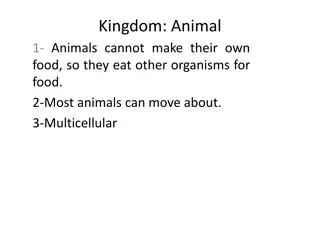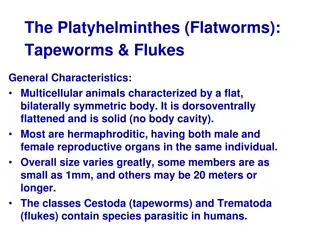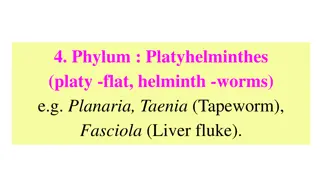Overview of Animal Kingdom's Phyla and Characteristics
Animals in the Kingdom Animalia have diverse characteristics and are classified into different phyla based on specific traits and features. This includes Porifera (sponges), Cnidaria (jellyfishes), Platyhelminthes (flatworms), Nematoda (roundworms), Annelida (earthworms), Mollusca (snails, octopus),
0 views • 10 slides
Understanding Cestoda: The Tapeworms in Platyhelminthes
Cestoda, a class of parasitic flatworms in the phylum Platyhelminthes, have a unique body structure with a scolex, neck, and segmented strobila. These tapeworms lack a digestive tract, absorbing nutrients through their body. They are hermaphrodites, with male and female reproductive organs in the sa
0 views • 12 slides
Overview of Platyhelminthes: Tapeworms and Flukes
Platyhelminthes, such as tapeworms and flukes, are multicellular organisms with a flat body and hermaphroditic reproductive systems. Tapeworms, a type of Cestode, have a unique structure with a scolex and proglottids for reproduction. They are dioecious and develop through the production of proglott
0 views • 24 slides
Understanding Platyhelminthes: Characteristics and Adaptations
Platyhelminthes, also known as flatworms, exhibit a dorsoventrally flattened body with bilateral symmetry. They can be endoparasites or free-living organisms, with some displaying unique adaptations for attachment and survival. These acoelomate organisms lack a complete digestive system, excreting w
0 views • 6 slides



